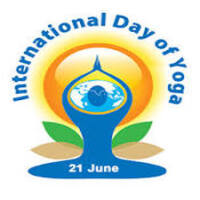International Day of Yoga: In this century we realize that Yoga has united the world: PM Narendra Modi
An invaluable gift of ancient Indian tradition, Yoga has emerged as one of the most trusted means to boost physical and mental well-being. The word “Yoga” is derived from the Sanskrit root yuj meaning “to join”, “to yoke” or “to unite”, symbolizing the unity of mind and body; thought and action; restraint and fulfillment; harmony between human and nature, and a holistic approach to health and well-being.
International Day of Yoga
The International Day of Yoga is a day in recognition of Yoga that is celebrated around the world annually on 21 June following its adoption by the United Nations on Dec 11, 2014. As Yoga exercises have shown significant benefits for physical and mental well-being, it was considered important by the UN to globally promote this wellness practice, which originated in ancient India.
The initiative for Yoga Day was taken by India’s prime minister Narendra Modi in his 2014 UN address, and the related resolution received broad global support, with 177 nations co-sponsoring it in the United Nations General Assembly, where it passed unanimously. Subsequently, the first International Yoga Day was celebrated successfully on 21 June 2015, around the world including New York, Paris, Beijing, Bangkok, Kuala Lumpur, Seoul and New Delhi.
Addressing the UN General Assembly on 27 September 2014, the Prime Minister of India Mr. Narendra Modi had said: “Yoga is an invaluable gift of India’s ancient tradition. It embodies unity of mind and body; thought and action; restraint and fulfillment; harmony between man and nature; a holistic approach to health and well-being. It is not about exercise but to discover the sense of oneness with yourself, the world and the nature. By changing our lifestyle and creating consciousness, it can help us deal with climate change. Let us work towards adopting an International Yoga Day.
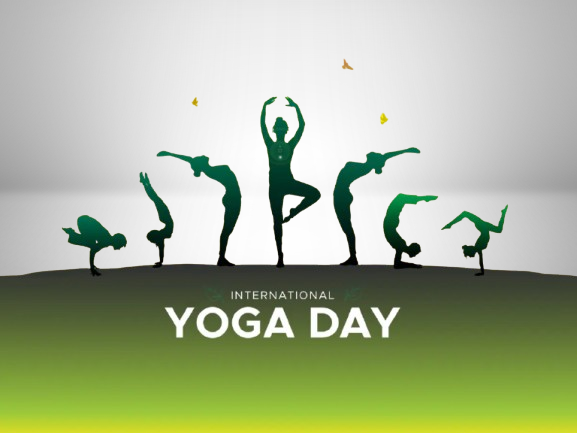
Due to Hon’ble PM Shri Narendra Modi’s relentless efforts, June 21 was declared as the International Yoga Day by the United Nations General Assembly. In its resolution, the UNGA endorsed that “Yoga provides a holistic approach to health and well-being apart from striking a balance between all aspects of life. The wider dissemination of information about the benefits of practicing Yoga would be beneficial for the health of the world population.” This infused an era of holistic health revolution in which attention was given more to prevention rather than the cure.
Centuries ago, one of the most popular Sanskrit poets Bhartrhari, while highlighting the specialty of Yoga, said:
धैर्यं यस्य पिता क्षमा च जननी शान्तिश्चिरं गेहिनी
सत्यं सूनुरयं दया च भगिनी भ्राता मनः संयमः।
शय्या भूमितलं दिशोSपि वसनं ज्ञानामृतं भोजनं
एते यस्य कुटिम्बिनः वद सखे कस्माद् भयं योगिनः।।
Meaning that by regularly practising Yoga, a person can imbibe some very good qualities like courage which protects like a father, forgiveness as possessed by a mother & mental peace which becomes a permanent friend. Through regular practise of Yoga truth becomes our child, mercy our sister, self-control our brother, the earth becomes our bed & knowledge satiates our hunger.
About the International Day Of Yoga (IDY) Logo
- Folding of both hands in the logo Symbolise Yoga, the union, Which Reflects the union of individual Consciousness with That of universal Consciousness, a perfect harmony Between mind & body, man & nature; a holistic approach to health & well being.
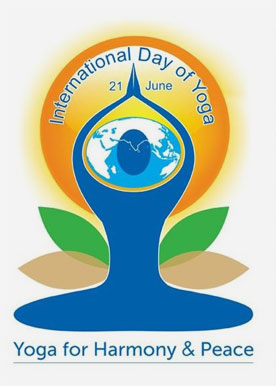
- The brown leaves symbolize the Earth element, the green leaves symbolize the Nature, blue symbolizes the Water element, brightness symbolizes the Fire element and the Sun symbolize the source of energy and inspiration.
-
The logo reflects harmony and peace for humanity, which is the essence of Yoga.
11th International Day of Yoga 2025
Yoga, a transformative practice, represents the harmony of mind and body, the balance between thought and action, and the unity of restraint and fulfillment. It integrates the body, mind, spirit, and soul, offering a holistic approach to health and well-being that brings peace to our hectic lives. Its power to transform is what we celebrate on this special day.
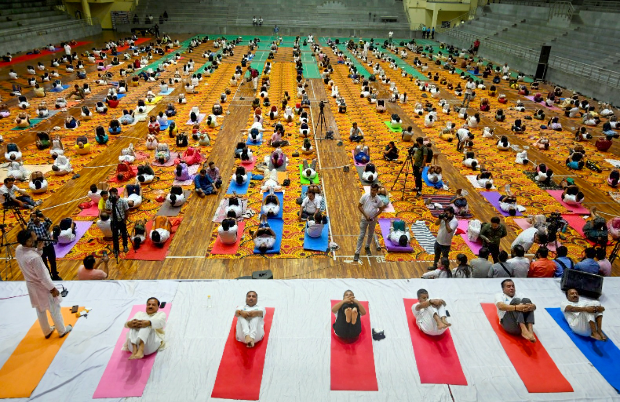
This year marks the 11th International Day of Yoga, a celebration that welcomes and values the participation of all. Organized by the Permanent Mission of India to the UN, the event will take place at the North Lawn Area of the UNHQ, with the theme “Yoga for One Earth, One Health.” Attendees will include delegates from UN Member States, UN officials and staff, and notable individuals from various fields in New York. The goal is to transform yoga into a widespread movement that emphasizes well-being and promotes global health and peace.
As India prepares to celebrate the 11th International Day of Yoga (IDY) on June 21, Visakhapatnam — the national host city for this year’s celebrations — witnessed a high-level review and field inspection by senior officials from the Ministry of Ayush and the Andhra Pradesh government.
10 Most Inspiring Yoga Gurus of India
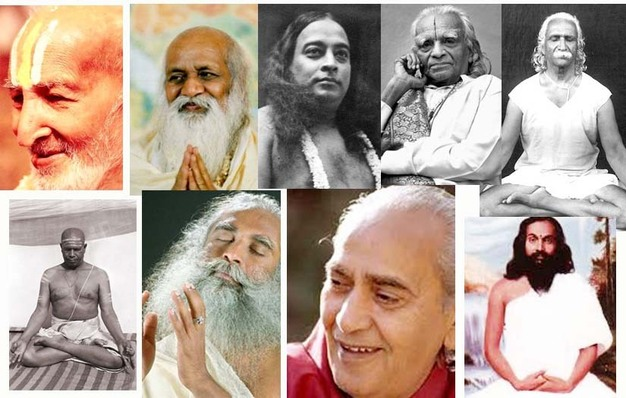
Yoga is an ancient practice is has been known for thousands of years for healing people. India is a country where this ancient practice was born 5000 years ago and a place where lord Adiyogi shiva has started this practice and later on our great Indian masters has kept the lineages of traditional yoga alive and passed to their students and the rest of the world.
Those were the yoga teacher who has kept the tradition of yoga alive and spread the light of this ancient art and transformed the whole dimension of yoga teacher training courses in India with their teachings. All of these yoga gurus has followed the path of yoga but it all lead to one goal that was to spread the light of traditional yoga and connect them with their inner consciousness through the practice of yoga.
Here are the 10 most insiring yoga gurus in India who has changes the whole dimension of yoga all over the globe:
1. Tirumalai Krishnamacharya
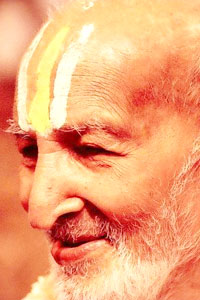
Infamous as father of modern yoga T. krishnamacharya was a prominent ayurvedic scholar, a yoga teacher and healer who revived the traditional art of hatha yoga. He was born on 18 November 1888 in Karnataka he developed the form of vinyasa yoga by combining breath and movement into the traditional hatha yoga. His teaching styles were based on patanjali yoga sutra and his disciples later on went on become some really influential yoga teachers.
2. Swami Sivananda Saraswati
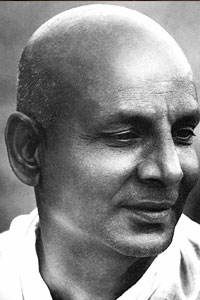
Born in tamil Nadu sivananda saraswati is prominently known for combining karma yoga, bhakti yoga, jnana yoga and raja yoga. At the age of 40 sivananda saraswati came to rishikesh in the search of self realization with the rigorous practice of yoga and meditation. Later on he established siavananda ashram that follows the path of swami sivananda saraswati. He went on to spread the teaching of yoga all over the world and dedicated his life towards the learning scriptures, teaching yoga and spirituality.
3. Maharishi Mahesh Yogi
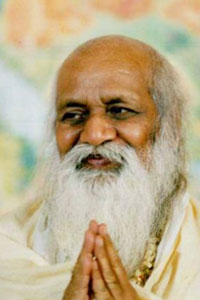
Maharshi Mahesh yogi was born in 12 January 1918 is famous to develop a deeper form of meditation that is known as transcendental meditation technique. It is a type of mantra meditation that produces deeper state of relaxation and promote a sense of sprirituality . He was later on become a spiritual guru of Beatles, beach boys and various celebrities. He encourages the studies to prove the benefits of yoga and meditation on the brain.
4. Swami Rama
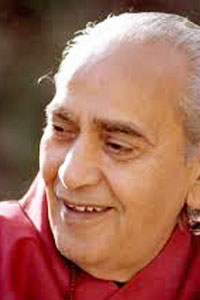
Born in 1925 was the first Indian born yogi that was studied by the group of western scientist. He was born in Garhwal Himalaya and brought under the guidance of various sages. He later on established Himalayan International institute of yogic science and philosophy and become the yogi who claims to control his body process and become a holder of sakhya yoga tradition.
5. B.K.S Iyengar
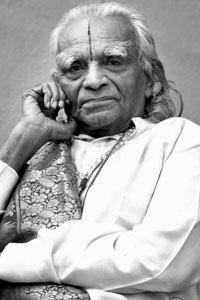
BKS Iyengar or Bellur Krishnamacharya Sundararaja Iyengar was the founder of the famous Iyengar Yoga. He started on the path of yoga after suffering from various diseases throughout the childhood that made him very weak. He started his yogic journey under his brother in law T Krishnamacharya and played a pivotal role in spreading the teaching of hatha yoga in the west.
Later on, he started experimenting with this ancient art and develop a new form that is what we have known today as Iyengar Yoga and turned into a popular international yoga teacher. Later on, in 1975, he established the Ramamani Iyengar yoga memorial institute.
6. Swami Kavalayananda
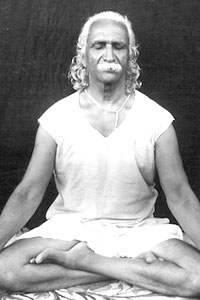
Swami Kuvalayananda was born on 30 August 1883 was a prominent researcher and a yoga teacher, known for his research work in the yoga and its practices. He started working on yoga Mimansa that was his first scientific journal.
7. Krishna Pattabhi Jois
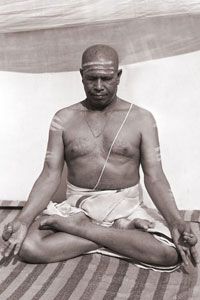
A Sanskrit scholar and a great Indian yoga master K Pattabhi Jois is one of the prominent names in the niche of yoga. Born in the Brahmin family he learned Sanskrit, Vedas and the art of yoga from childhood. A prominent disciple of T Krishnamacharya that later on developed Ashtanga yoga or ashtanga vinyasa yoga that was based on the teachings of ancient scripture yoga korunta.
8. Jaggi Vasudev
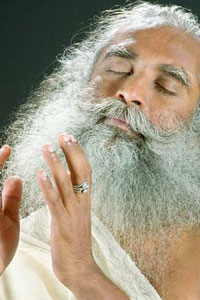
A mystic personality and popularly known as Sadhguru is a founder of Isha yoga; a foundation that provides various yoga programs all over the globe. He is well versed yogi and philanthropist that has spent his whole life in delivering the knowledge of yoga to the people and helps people through his foundation.
9. Paramahansa Yogananda
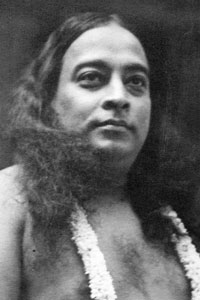
Yogananda was a first Indian yogi who is famous for introducing the teaching of kriya yoga to the west. He was the first yogi to teach yoga in the west and the author of the Autobiography of a yogi. A first yogi to settle in the west he travelled to spread the teaching of yoga and spirituality to the west.
10. Dhirendra Brahmachari
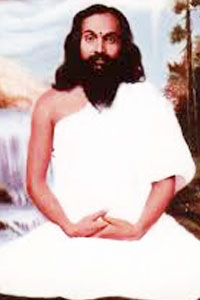
Also known as a controversial yoga guru; he was the yoga teacher of Indira Gandhi. He was a published author and the first one to use television to popularize yoga in India.
Father Of Yoga
While the origins of yoga are ancient and rooted in Indian philosophy, Maharishi Patanjali is widely considered the “Father of Yoga”. He is known for compiling and systematizing yoga practices into the Yoga Sutras, a foundational text that outlines the philosophy and techniques of yoga.
In some contexts, Tirumalai Krishnamacharya is referred to as the “Father of Modern Yoga” for his significant role in shaping the yoga we know today.
Maharishi Patanjali, rightly called “The Father of Yoga” compiled and refined various aspects of Yoga systematically in his “Yoga Sutras” (aphorisms). He advocated the eight folds path of Yoga, popularly known as “Ashtanga Yoga” for all-round development of human beings.
Health benefits of Yoga
Someone who practices yoga ( What is Yoga? ) over time sees a vast difference in their body and how they feel. Some of the key benefits of yoga are:
- A sustained practice results in weight loss
- Improved blood circulation, which improves skin quality and texture
- Delays overall ageing and is therapeutic by nature
- Improves physical stamina
- Good for gut health and improved digestion
- Enhances fertility and reproductive health
- Improves sleep cycle
- It makes you calm and happy
- Improves concentration
- Reduces stress
- Improves immunity. Click here to know more about the types of yoga.
International Day of Yoga Themes
Every year the International Yoga Day is celebrated with a specific theme. Check the themes below.
International Yoga Day theme 2024 – “Yoga for self and societyIt integrates the body, mind, spirit, and soul, offering a holistic approach to health and well-being that brings peace to our hectic lives. Its power to transform is what we celebrate on this special day.
International Yoga Day theme 2023 – “For 2023, the theme is “Vasudhaiva Kutumbakam“. The Sanskrit phrase “Vasudhaiva Kutumbakam” translates to “The world is one family”. This theme underscores the universal appeal of yoga, echoing the belief that the benefits of yoga are meant for all of humanity, promoting unity and harmony.
International Yoga Day theme 2022 – “Yoga for Humanity.”
International Yoga Day theme 2021 – “Yoga for Well-Being.”
International Yoga Day theme 2020 – “Yoga at Home and Yoga with Family”
Yoga Day theme 2019 – “Yoga for Heart”
Yoga Day theme 2018 – “Yoga for Peace”.
Yoga Day theme 2017 – “Yoga for Health”
Yoga Day theme 2016 – “Yoga for the Achievement of the Sustainable Development Goals”.
Yoga Day theme 2015 – “Yoga for Harmony and Peace”
31 cool yoga facts and stats
Below are the 31 yoga facts you must know before you practice yoga:
-
Ideally, yoga should not be performed in front of a mirror.
-
Americans spend $16 billion on practicing yoga each year
-
Yoga is scientifically proven to alleviate symptoms of various medical problems
-
Ancient yogis believe our breathing rate determines our lifespan
-
The world’s largest yoga lesson had 100,984 attendees
-
Headstand is the most dangerous yoga pose
-
The world’s oldest yoga teacher taught yoga until she was 101
-
The official count of yoga poses or asanas is 84.
-
Savasana is one of the most difficult yoga poses to master.
-
Yoga refines and purifies 8 energy centers of the body called ‘chakras’.
-
Yoga should be practiced while wearing loose clothes. (sorry yoga pants)
-
72% of the yoga practitioners are women.
-
Over 100 styles of yoga have evolved in the past couple of centuries.
-
Yoga is over 5000 year old.
-
The word “yoga” comes from Sanskrit and it means “union”
-
Yoga can work on every muscle of your body.
-
Anyone can practice some forms of yoga.
-
There are around 300 million yoga practitioners across the globe.
-
Approximately 67% of the yoga practitioners prefer to do yoga in their homes.
-
Yoga has an injury rate of less than 10%.
-
Approximately 8.7% of Americans are yoga practitioners.
-
Practicing yoga decreases blood pressure by 3.8 mmHg.
-
Yoga relieves chronic pain in 89% of patients.
-
Yoga practitioners can lose an average of 3.5 kg of weight in three months.
-
Approximately 54 % of the people started yoga to release tension.
-
The majority of yoga practitioners are under the age of 44.
-
Male practitioners are known as “Yogis” and female practitioners are known as “Yoginis”.
-
There are over 18,000 registered yoga schools across the globe.
-
Yoga teaching is becoming an increasingly popular career choice.
-
Yoga was initially practiced as a form of healing.
-
Performing “power yoga” can improve your self-esteem.
Above are 31 interesting and cool yoga facts that encourage hundreds of people everyday to start their yoga journey.
- Yoga classes used to be just for men, women were not invited until 1937
Click here to read more about the previous article on International Yoga Day
